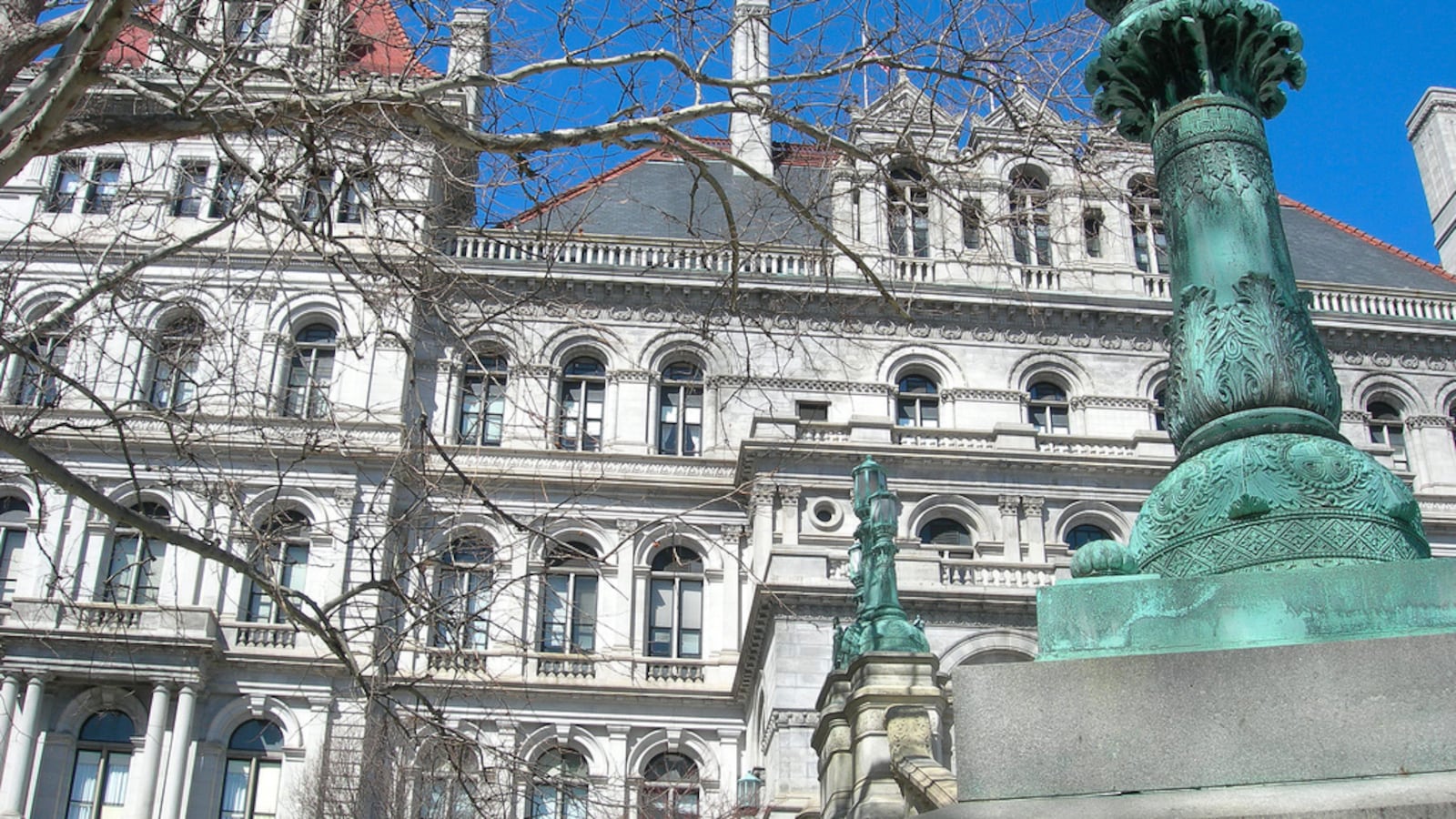More than a week after the state’s budget deadline, lawmakers resolved their differences on education with a per-pupil increase in charter school funding and a $1.1 billion increase in school aid.
The funding tug-of-war between charters and traditional public schools boiled over into a contentious fight this year, which contributed to the most delayed budget on Governor Andrew Cuomo’s watch.
Charter schools were due a big funding boost if lawmakers did not act, a concern for the Democrat-controlled Assembly and teachers unions. Meanwhile, Cuomo warned that the state might not be able to handle a large increase in education spending with possible federal cuts on the horizon.
In the end, despite the long haul, the set of compromises seems to have left each party at least fairly satisfied. Charter schools will get extra funding and will have future aid linked to spending on traditional public schools. State aid for education, more broadly, will increase by more than $1 billion. The state’s teachers union called the budget “all in all, progress for our students.”
Here’s more on each of the big education items announced in this year’s budget:
Charter schools get funding boost, increases will be linked to those for public schools
The deal will increase funding for charter schools by $500 per pupil, and starting in the 2018-19 school year, “tuition” funding paid by the state will increase at the same rate as public school spending.
That compromise was struck, in part, in response to a charter school tuition formula that has been frozen since 2010-11 (though some years charter schools have received supplemental aid). The formula was set to unfreeze this year and would have resulted in a $1,500 increase in per-pupil spending, which Cuomo called a “windfall” for charter schools. (Charter school advocates say it is important to achieve equitable funding between traditional public schools and charters.)
One major problem with that plan, according to Mayor Bill de Blasio, was that the extra funding was set to come out of the city’s budget. (New York City’s Office of Management and Budget estimated it would cost the city about $200 million.)
The final result strikes a middle ground. The state will cover the extra $500 per pupil in the upcoming school year, but starting the next year, when charter school tuition increases mirror district school increases — and that money will come out of the city’s coffers.
There is another benefit for charter schools in the state’s budget: more funds for schools moving into private space. Under a 2014 law, new and expanding charter schools that don’t get public space are entitled to either 20 percent of their per-pupil tuition rate or their total rent. Now, that number has jumped to 30 percent.
Finally, Cuomo proposed lifting the cap on the number of charter schools allowed to open in New York City in January and instead having one big cap for the entire state. That proposal was rejected, leaving only 30 additional charter school slots for the city — and perhaps a battle for another year.
Most charter advocates are pleased with the outcome. New York City Charter School Center CEO James Merriman called it a “major victory.”
“This budget agreement was hard fought and we deeply appreciate the tenacious commitment of Governor Cuomo, Majority Leader Flanagan and Coalition Leader Klein to treat public charter school students fairly,” said Merriman said in a statement.
Success Academy CEO Eva Moskowitz disagreed with that assessment, saying the agreement “shortchanged” students in charter schools.
Total school aid spending a bit below proposals
School aid is set to increase by $1.1 billion, bringing total education spending to $25.8 billion.
That is slightly below expectations. It is close to what the governor originally proposed — a $1 billion increase — but it is less than what the Assembly or Senate proposed, $1.8 billion and $1.2 billion, respectively. It is also far below what state’s education policymaking body proposed at $2.1 billion.
Late in March, Cuomo suggested the threat of federal cuts could limit education spending, since he was not sure the budget could handle “dramatic increases” with federal uncertainty.
Foundation aid is here to stay
A major portion of education spending is allocated through a “foundation aid” formula, which is designed to help to needy students. The formula was created in response to the Campaign for Fiscal Equity lawsuit, which found some New York children did not have access to a sound basic education.
This year’s increase in foundation aid is $700 million, though advocates argue the total increase should be much higher, given the amount they say is owed under the lawsuit: $4.3 billion in all. The state’s Board of Regents outlined an “aggressive” plan to have the state provide that full amount over three years.
But advocates are relieved the “foundation aid” formula itself will remain intact. Cuomo’s original proposal included a controversial change to the formula that several advocates called a “repeal.” That’s off the table this year and an additional increase is expected next year, according to the New York State Council of School Superintendents Deputy Director Robert Lowry. But it remains to be seen whether the total amount of funding will be fully phased in over the years to come, especially since Cuomo’s office disagrees that the money is owed to schools.
“In a major victory, Governor Cuomo’s plan to repeal the foundation aid formula was defeated,” said Billy Easton, executive director of the Alliance for Quality Education, an advocacy group that fights for increased school funding. “The foundation aid increase is modest, but it is a significant improvement on the truly meager foundation aid proposal offered by the governor.”

